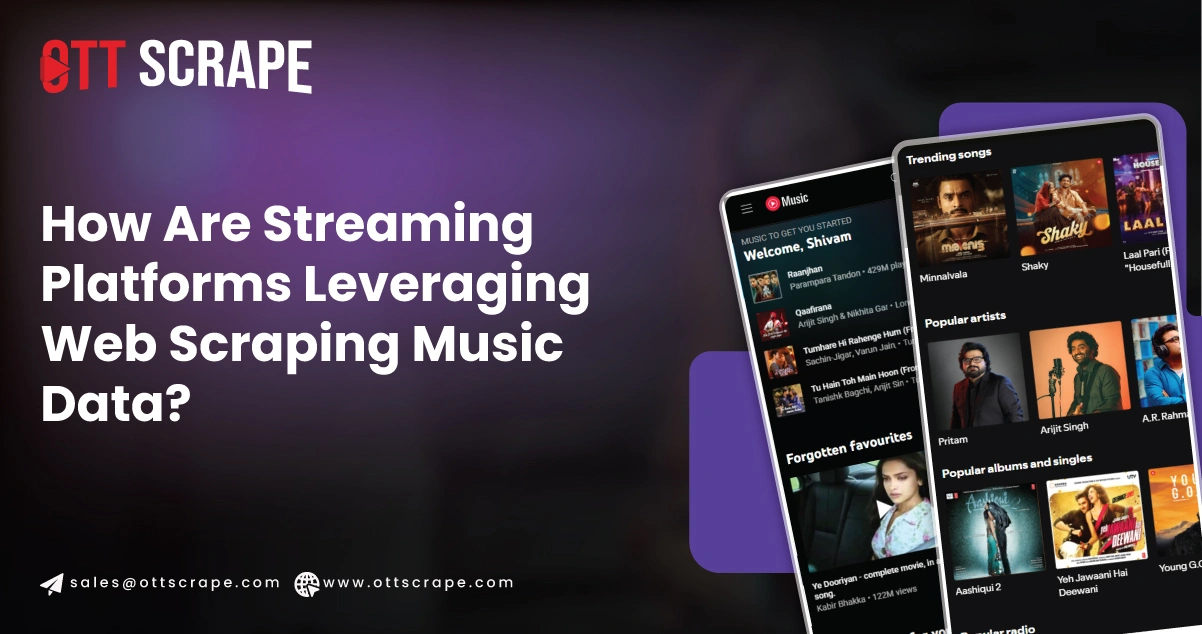
Introduction
Over the past two decades, the music industry has transformed dramatically. The transition from vinyl records and CDs to digital downloads and streaming platforms has reshaped how music is created, distributed, and consumed. Data has become a critical asset for driving business success in this fast-paced and ever-evolving digital environment. Companies increasingly use web scraping music data to collect valuable insights from streaming platforms, social media, charts, and user-generated content. By leveraging music data scraping, businesses can understand listener behavior, spot emerging trends, and make data-driven decisions that enhance marketing strategies, improve user experiences, and boost revenue. Whether discovering rising artists, optimizing playlists, or analyzing sentiment in song reviews, the ability to scrape music data provides a competitive advantage. As the industry continues to digitize, those who effectively tap into this vast reservoir of music-related information will be best positioned for growth and innovation.
The Explosion of Music Data in the Digital Age
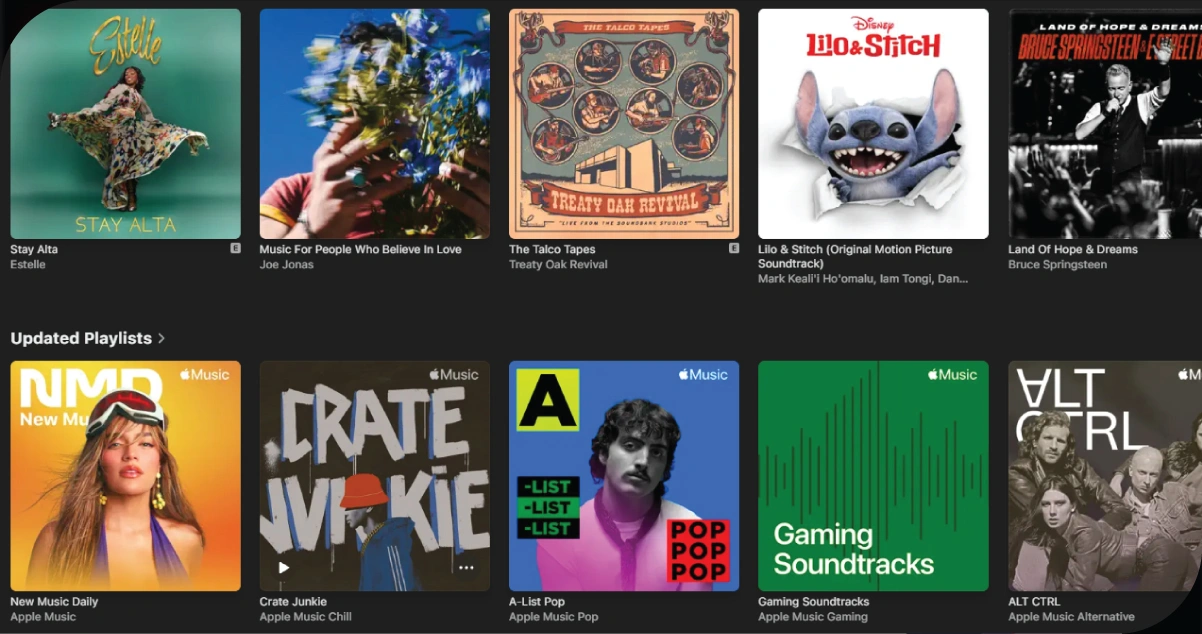
Music is no longer confined to physical formats. Today, it lives in millions of playlists, artist pages, and user reviews across streaming platforms like Spotify, Apple Music, YouTube Music, SoundCloud, and Deezer. Social media platforms, fan forums, lyrics websites, concert databases, and merchandise stores generate vast amounts of music-related data. This data includes:
- Song metadata (title, album, genre, release date)
- Artist popularity and trends
- Playlist inclusions and user-generated content
- Chart rankings and streaming statistics
- Listener preferences and geographic distribution
- Concert schedules and ticketing information
Music data scraping tools help businesses efficiently collect and structure information from various sources. By applying web scraping for music analytics, companies gain powerful insights into listener behavior, emerging trends, and market dynamics, enabling smarter decision-making, better audience targeting, and accelerated growth in a competitive industry.
Enhancing Music Discovery Platforms
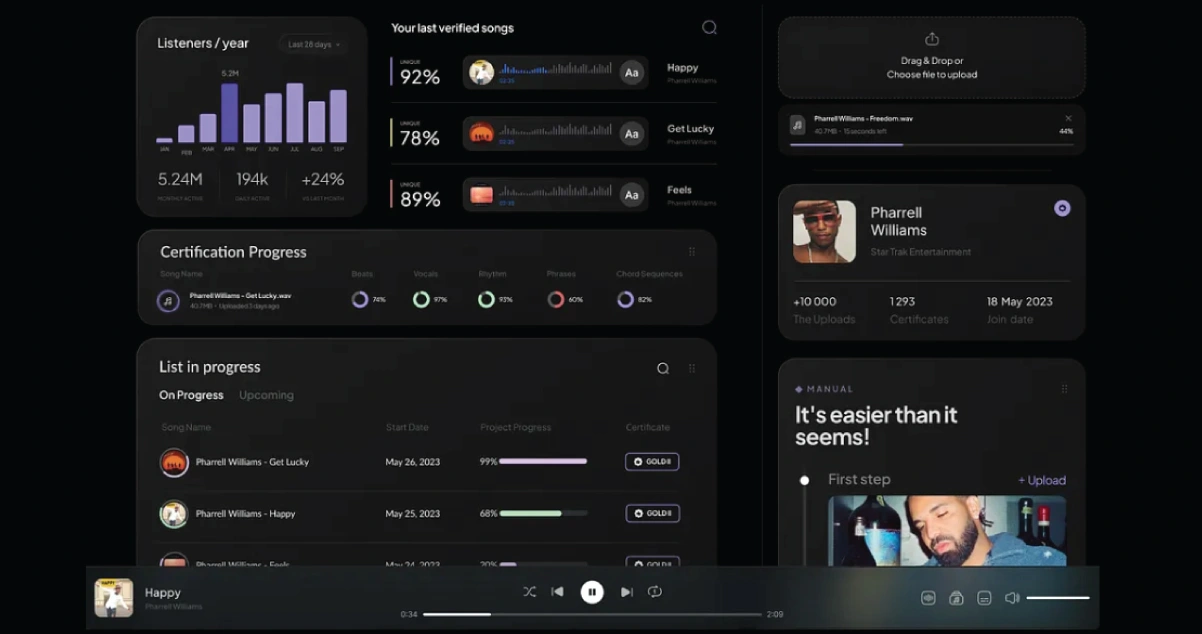
Music discovery platforms—apps or services that recommend songs and artists—rely heavily on comprehensive and up-to-date music datasets. These platforms can fine-tune their recommendation engines by using tools to scrape song data from multiple sources, such as Spotify's trending charts, YouTube's most-viewed music videos, or Last.fm listening stats.
They can identify:
- Trending artists in specific regions
- Niche genres are gaining popularity
- User playlists with high engagement rates
- Lyrics themes resonating with particular demographics
With this scraped data, businesses can deliver hyper-personalized experiences to users, keeping them engaged longer and boosting app usage. This improved user satisfaction directly translates into increased ad revenue, subscription sales, and market share.
Enabling Data-Driven A&R Decisions
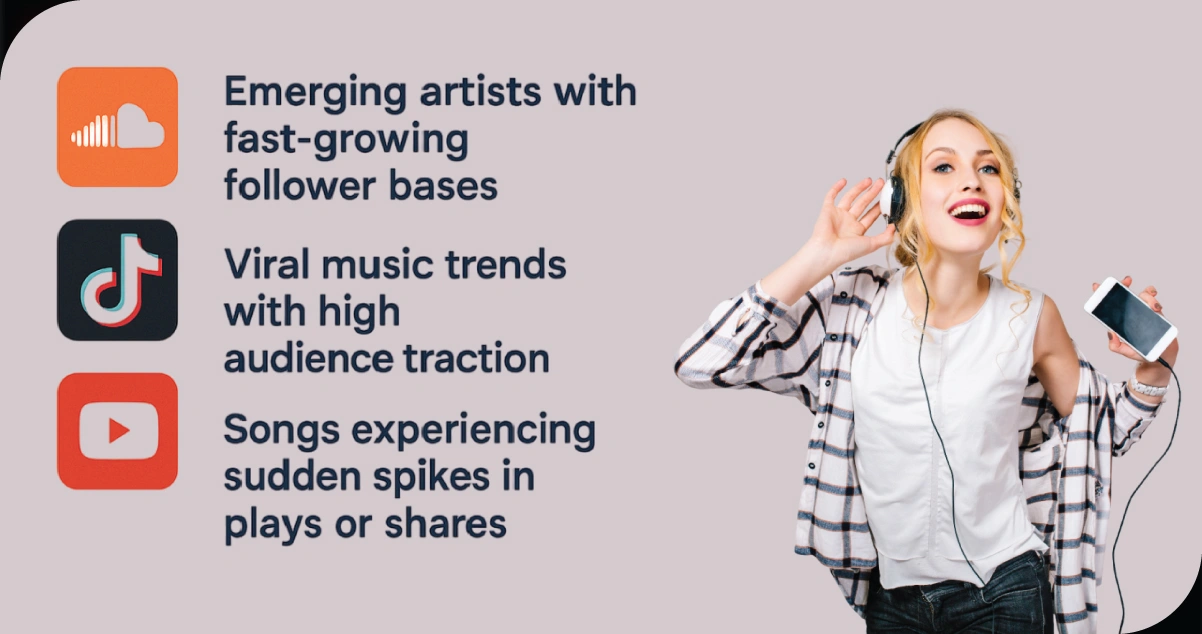
In the past, Artists and Repertoire (A&R) departments relied on intuition, industry contacts, and live performances to discover talent. Now, with access to scraped music data, talent scouting has entered the digital era.
Record labels and music agencies scrape platforms like SoundCloud, TikTok, and YouTube to identify:
- Emerging artists with fast-growing follower bases
- Viral music trends with high audience traction
- Songs experiencing sudden spikes in plays or shares
This data-driven approach shortens the time it takes to discover promising talent and reduces investment risk. It also allows labels to sign artists who already have a validated audience, improving the chances of commercial success.
Boosting Concert Planning and Ticket Sales
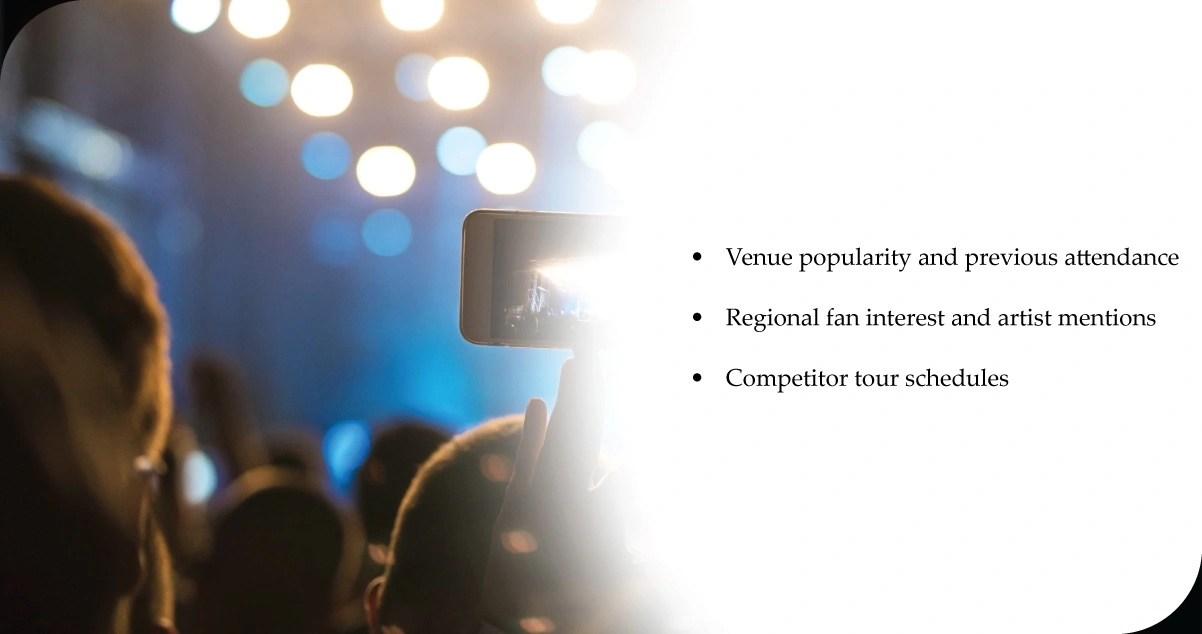
Live performances remain a significant revenue stream for musicians and event organizers. Scraping concert listing sites, artist tour pages, and fan forums helps companies optimize tour planning and ticket sales strategies.
By analyzing scraped data on:
- Venue popularity and previous attendance
- Regional fan interest and artist mentions
- Competitor tour schedules
Music event organizers can schedule concerts in high-demand areas, avoid event overlaps, and set competitive ticket pricing. Additionally, real-time scraping of ticketing platforms helps monitor ticket sales trends and enables last-minute marketing pushes for underperforming events.
Empowering Music Merchandise Retail
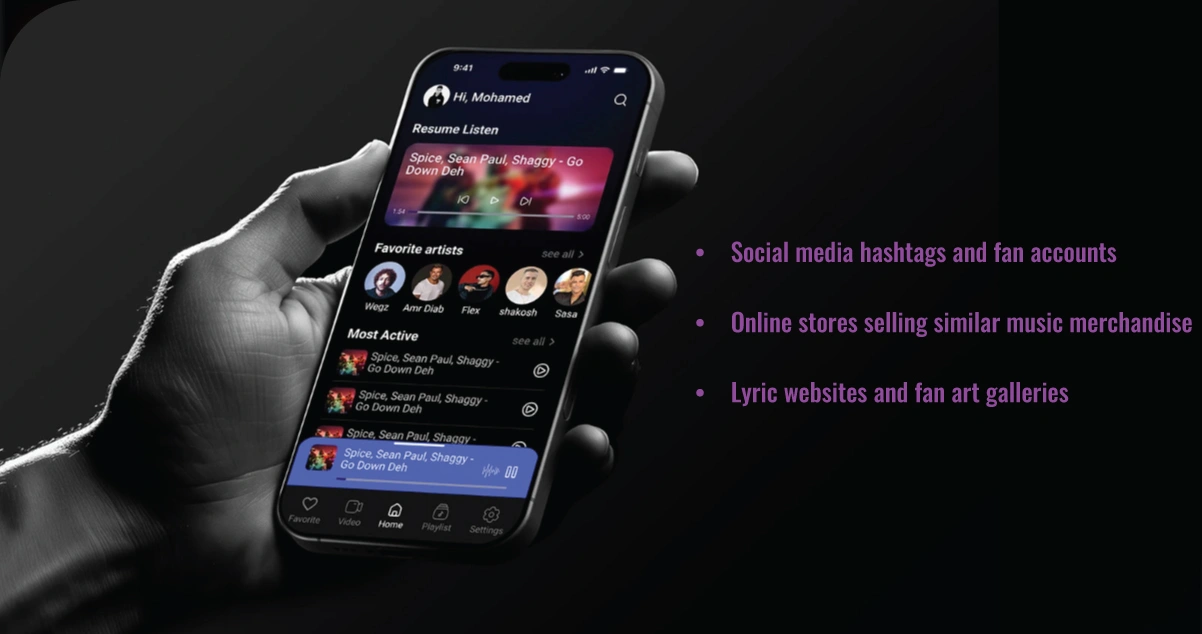
Scraped music data also benefits e-commerce companies selling artist merchandise. Tracking which artists are trending, what album covers are being shared, or which song lyrics are going viral helps these retailers stock relevant products.
Retailers can scrape data from:
- Social media hashtags and fan accounts
- Online stores selling similar music merchandise
- Lyric websites and fan art galleries
This intelligence helps them design apparel, accessories, posters, and collectibles that align with what fans talk about. Merchandise launches timed with album releases or viral TikTok trends also increase sales due to topical relevance.
Informing Strategic Partnerships and Licensing Deals
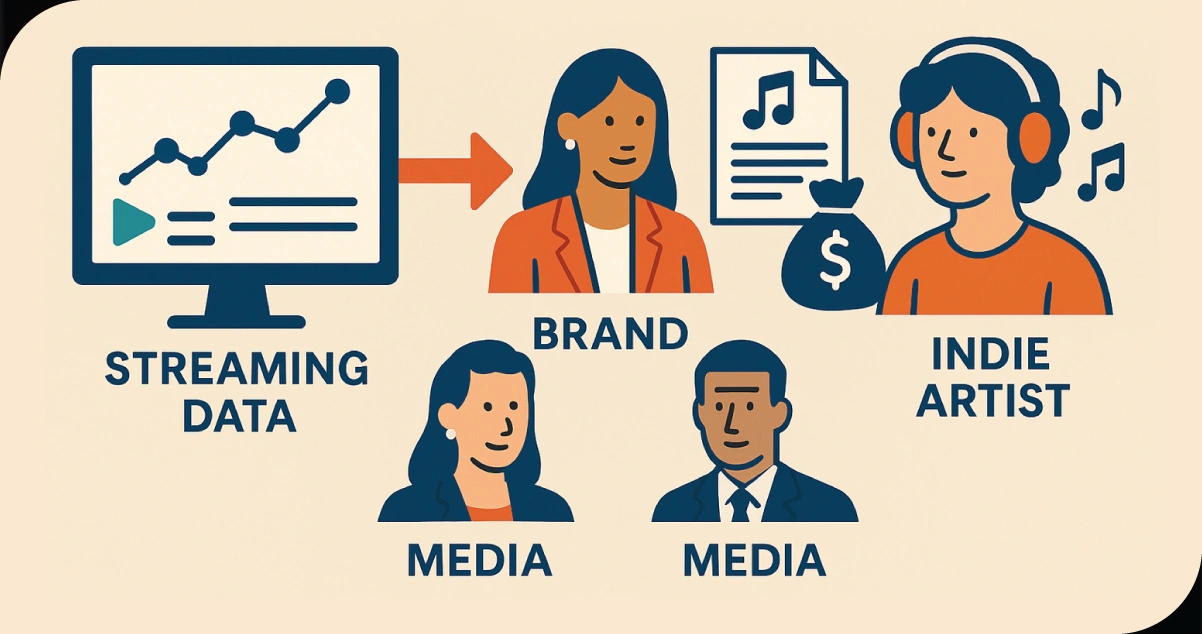
Streaming and user engagement data from global platforms provide insights into music consumption behaviors across geographies. This helps brands form meaningful partnerships with artists or labels that appeal to their target audience.
For instance, a fashion brand scraping Spotify playlists may notice a surge in listeners for a particular indie artist popular among Gen Z. This artist could then be tapped for brand endorsements, commercials, or capsule collaborations.
Similarly, media companies looking to license music for films, series, or advertisements use scraped data to identify songs with a proven emotional resonance or rising popularity. This lowers the risk associated with licensing lesser-known music and improves campaign effectiveness.
Optimizing Playlist Marketing and Streaming Strategies
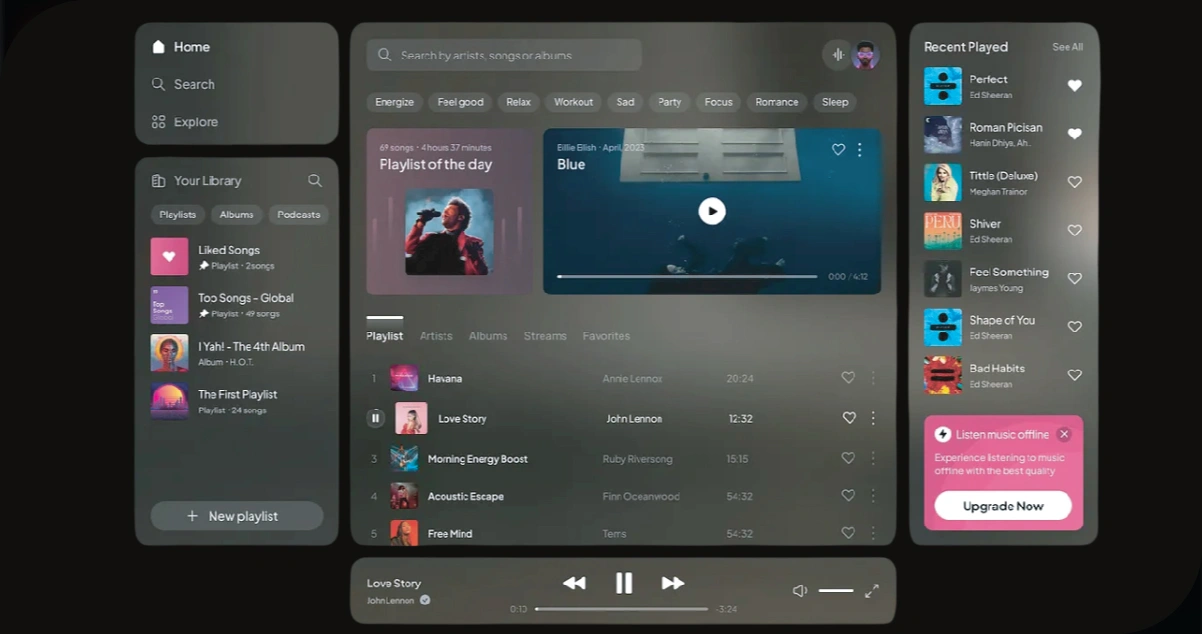
Playlists have become powerful marketing tools in the streaming era. Getting featured on curated playlists can dramatically increase a song's reach. Record labels and indie artists scrape data on:
- Playlist curators and submission channels
- Songs that consistently trend on mood or genre playlists
- Engagement metrics like skip rate and repeat plays
This enables smarter playlist pitching and content optimization. Artists can adapt their music length, intros, or themes to match the trends in scraped playlist data, increasing their chances of inclusion and improving stream counts.
Understanding Listener Sentiment and Preferences
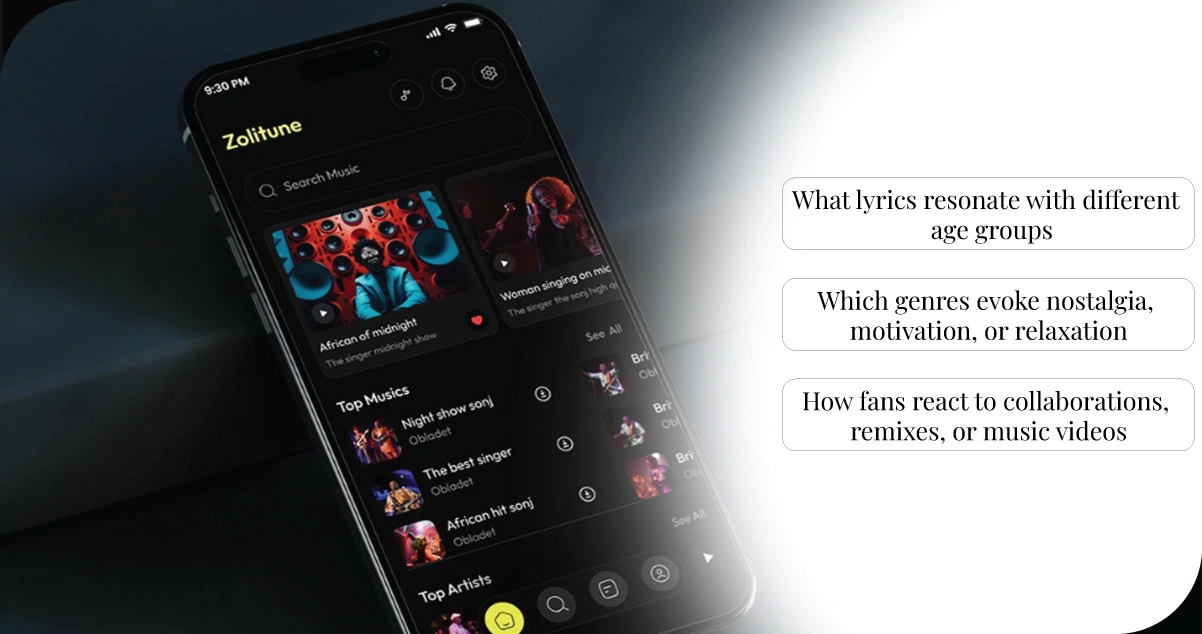
Beyond numbers, qualitative data matters. Lyrics websites, comment sections, fan forums, and music review blogs offer valuable context on how listeners feel about certain songs or artists. Scraping such data reveals sentiment trends, fan feedback, and emotional associations.
Businesses can categorize this data to understand:
- What lyrics resonate with different age groups
- Which genres evoke nostalgia, motivation, or relaxation
- How fans react to collaborations, remixes, or music videos
Marketers use this to fine-tune messaging, align brand tone with trending emotions, or even select background scores for ad campaigns based on listener sentiment.
Fueling Music Analytics Startups
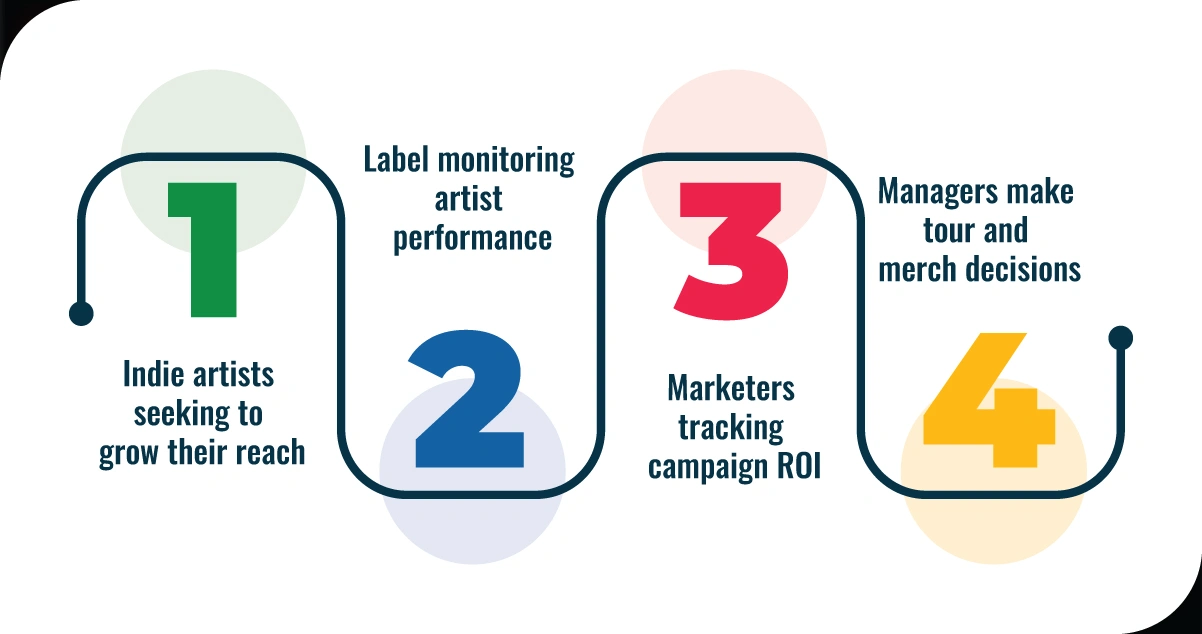
A growing wave of music analytics startups owes its existence to scraped data. These platforms offer dashboards and visualizations that track artist popularity, playlist growth, streaming patterns, and fan engagement.
These startups scrape data from various music and social platforms, process it using AI, and offer it as subscription-based insights to:
- Indie artists seeking to grow their reach
- Label monitoring artist performance
- Marketers tracking campaign ROI
- Managers make tour and merch decisions
Such tools lower the entry barrier for newcomers in the music industry and allow data-informed growth at every level.
Personalizing In-App and Marketing Experiences
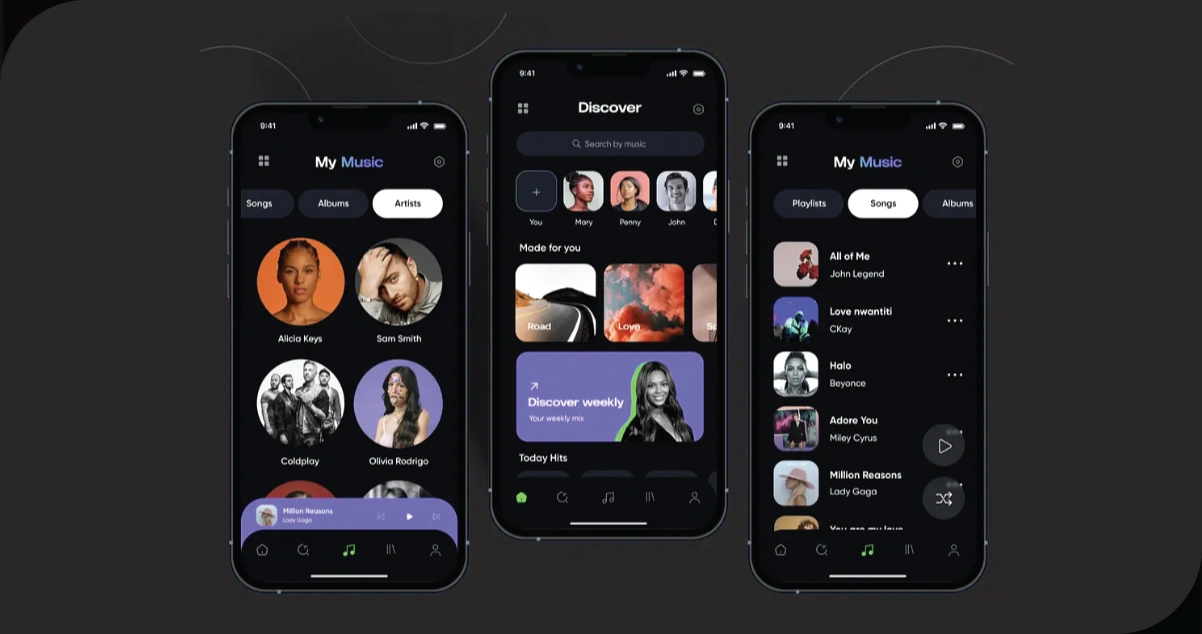
Music platforms that scrape user behavior and song metadata can deliver dynamic experiences in-app and across other digital touchpoints. Music data scraping can benefit personalized push notifications, curated email campaigns, and smart suggestions.
For instance:
- A listener who streams acoustic tracks in the morning may receive a 'Chill Mornings' playlist recommendation at 8 AM.
- Users who skip songs within the first 10 seconds may be nudged toward tracks with engaging intros.
These personalized experiences enhance user retention and boost conversion rates for upsells and cross-promotions.
Gaining Competitive Intelligence
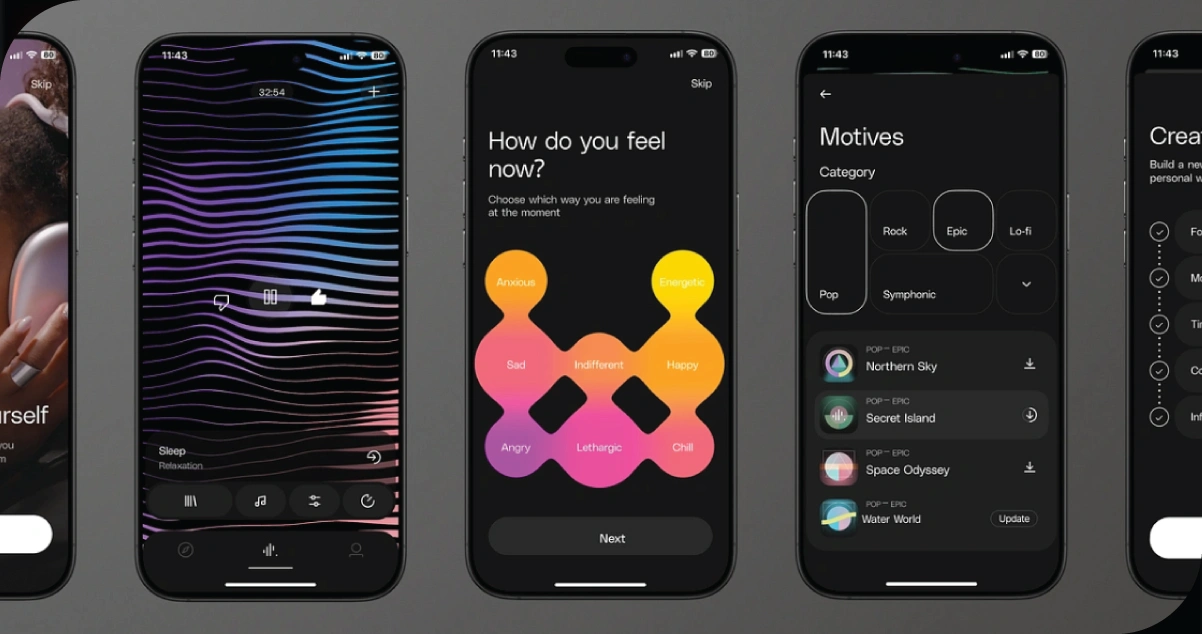
Businesses in the music industry need to benchmark against competitors constantly. Scraping data on rival platforms—such as their top playlists, artist promotions, or pricing models—offers actionable insights.
For example:
- A music app might scrape YouTube Music's trending videos to predict the next wave of popular tracks and prepare exclusive content.
- A merchandise seller could scrape a competitor's bestsellers to anticipate demand.
This competitive intelligence enables businesses to react faster, seize opportunities early, and differentiate their offerings in a saturated market.
How OTT Scrape Can Help You?
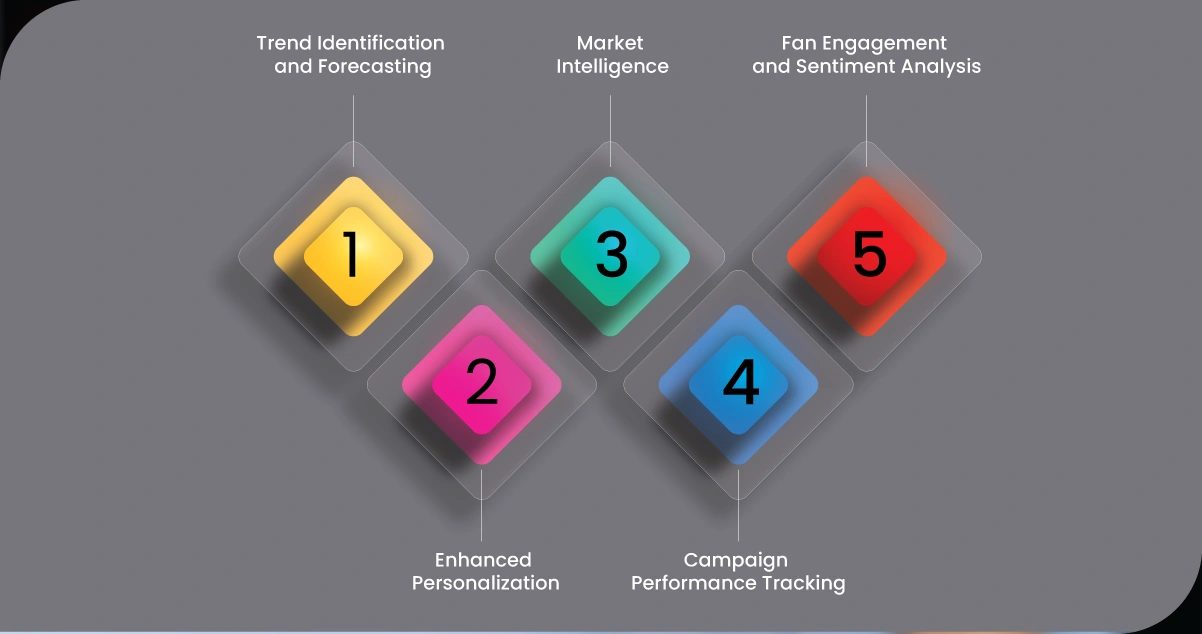
1. Trend Identification and Forecasting: We analyze real-time streaming data to spot trending songs, genres, or artists, helping businesses stay ahead of the curve and align marketing strategies with audience interests.
2. Enhanced Personalization: Scraping listener behavior across platforms enables apps and services to deliver highly personalized recommendations, improving user engagement and retention.
3. Market Intelligence: Our scraping services provide competitive insights from platforms like Spotify, Apple Music, and YouTube Music—tracking chart positions, play counts, and artist growth for smarter strategic decisions.
4. Campaign Performance Tracking: We monitor how songs and artists perform post-release, helping labels and promoters measure the effectiveness of their campaigns using real-time data from multiple platforms.
5. Fan Engagement and Sentiment Analysis: Collecting comments, reviews, and shares, we help brands understand fan reactions, enabling them to fine-tune outreach efforts with precise, data-backed insights.
Final Thoughts
In today's data-rich music landscape, web scraping is a powerful enabler of business growth. Whether you're a music streaming app, a label, a concert promoter, a merch retailer, or a tech startup, structured access to real-time music data scraping can drive sharper strategies, more agile decision-making, and deeper audience engagement. Beyond just metrics, brands can also explore music sentiment analysis using scraping to understand listener emotions, fan reactions, and the impact of songs across different platforms. As long as businesses focus on value-driven outcomes from the data, web scraping offers an unmatched advantage, allowing brands to tune into the rhythm of their market and orchestrate success.
Embrace the potential of OTT Scrape to unlock these insights and stay ahead in the competitive world of streaming!
